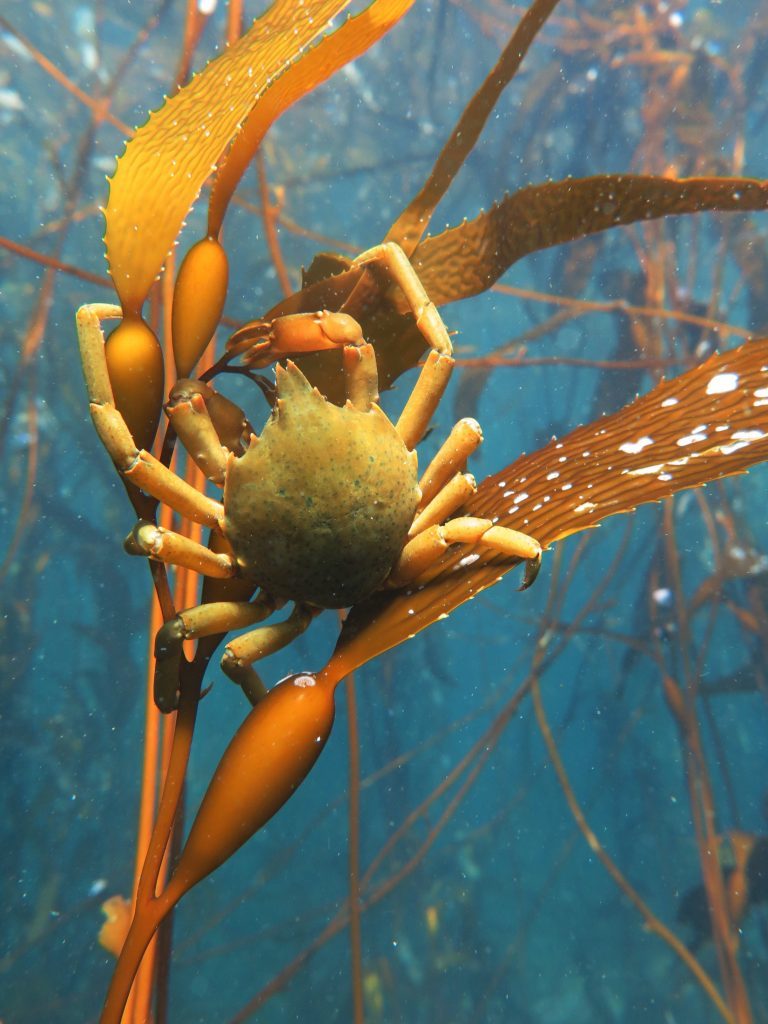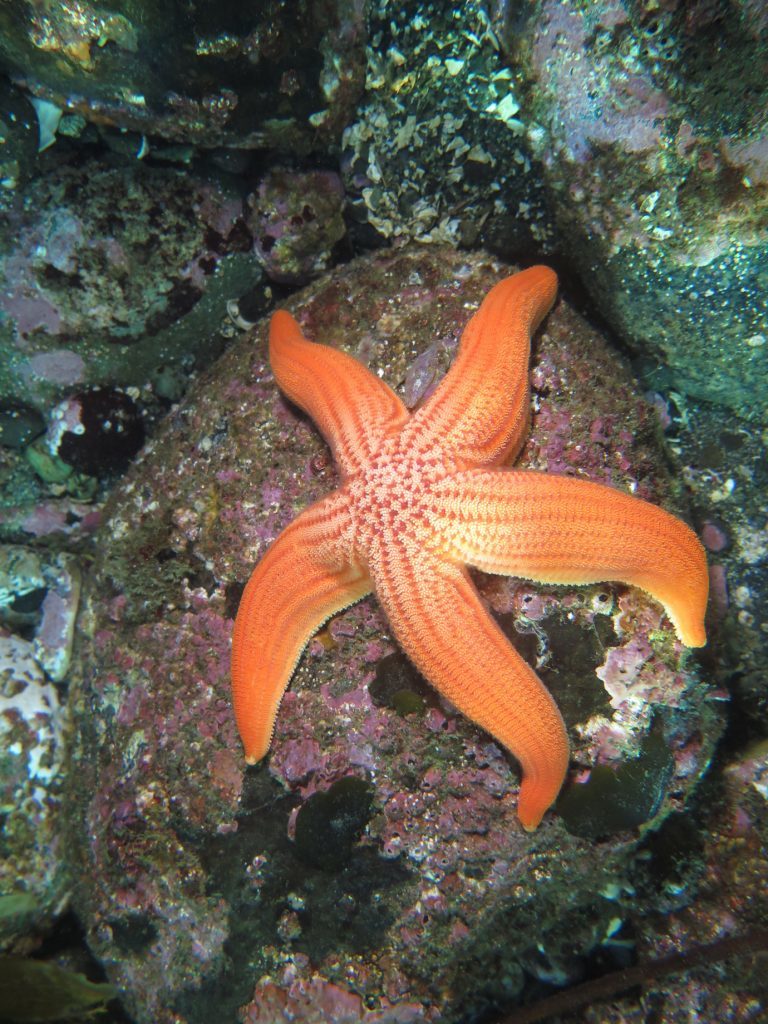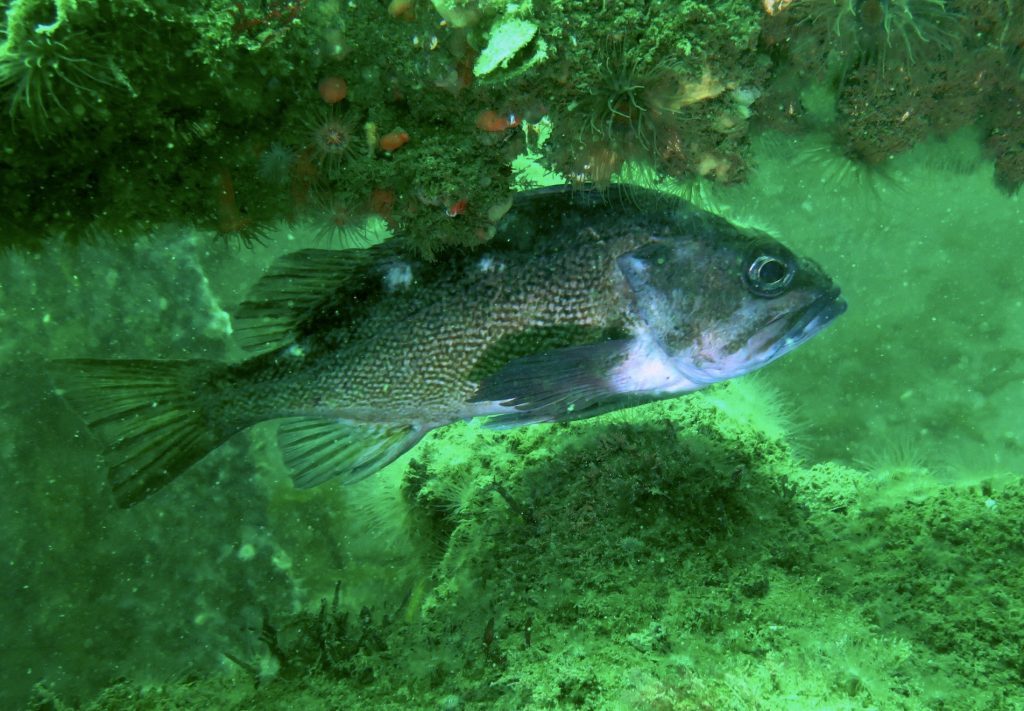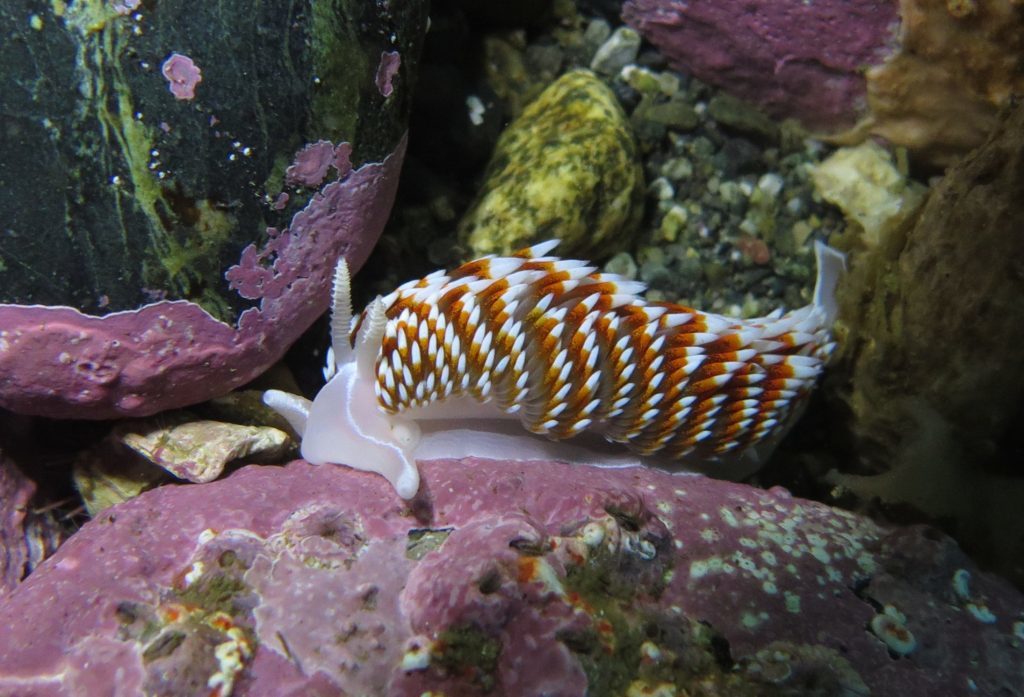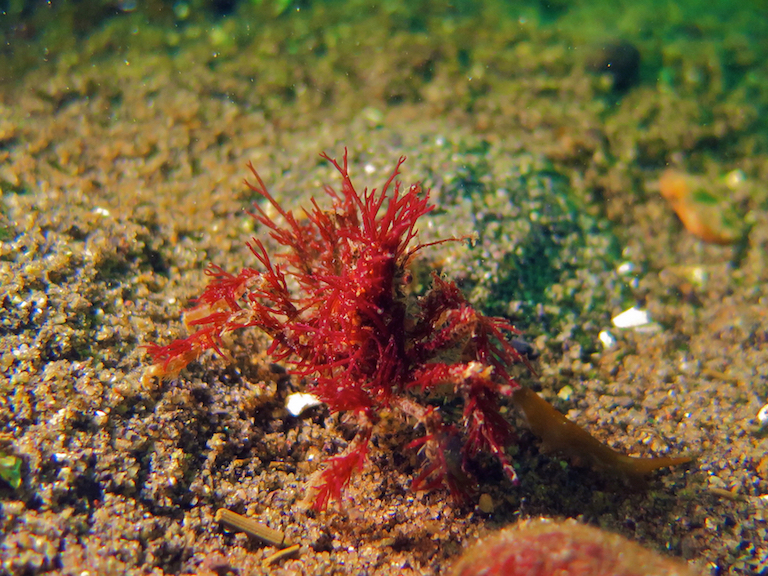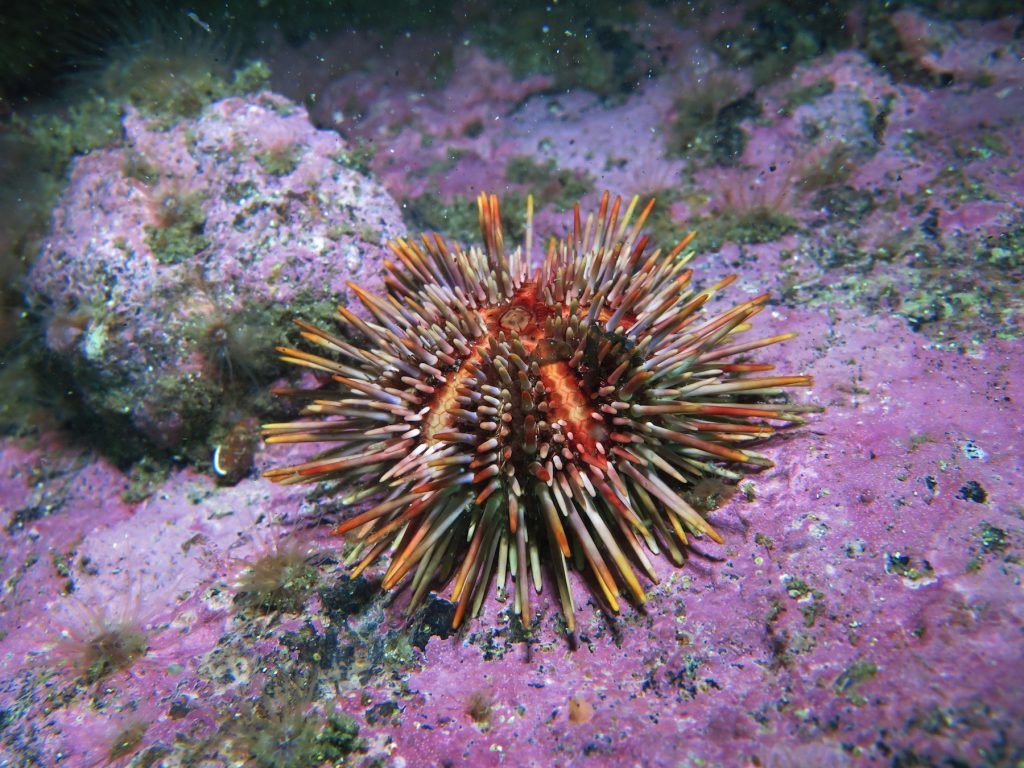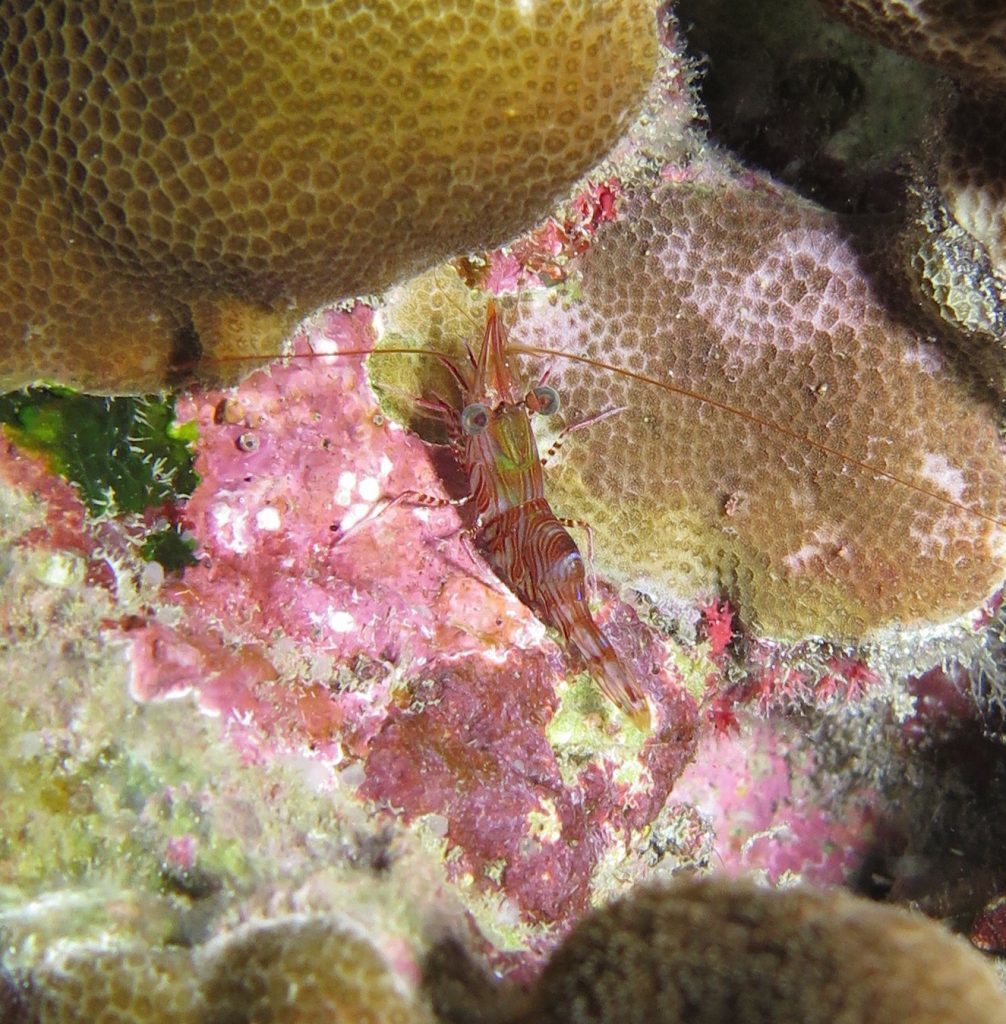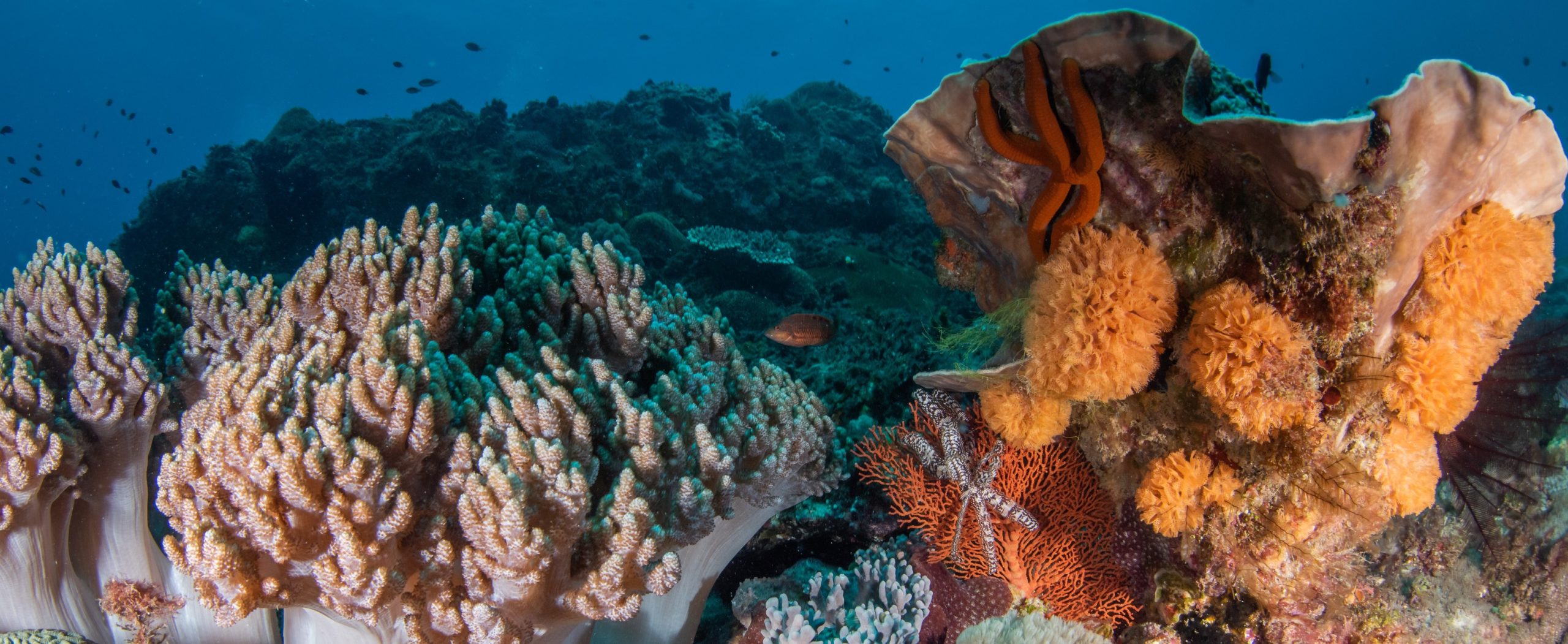At the end of the Chilean summer keen Reef Life Survey (RLS) divers undertook surveys at Pargüa and Calbuco, in the inner sea near Puerto Montt and the remote Chiloe Island. Dives ranged from 3 to 24 metres and although the water reached low temperatures (11 degrees), as always surveys were completed carefully with plenty of shots! With tides ranging up to 7 metres, the dedicated divers planned for the slack tides and ensure a high level of diver safely and survey efficiency. It was well worth it!
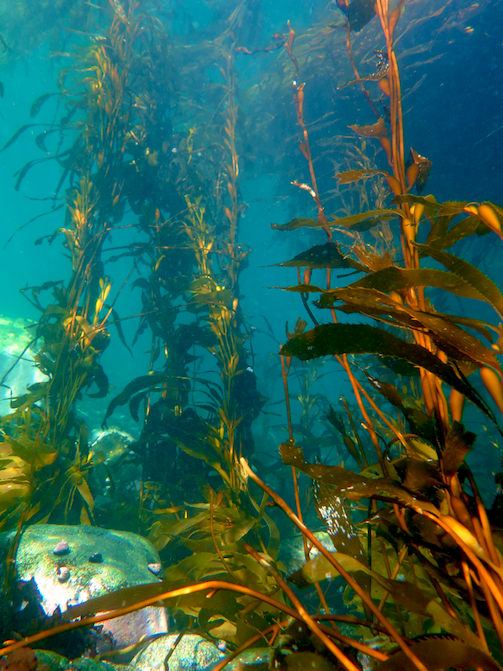
Southern Chile has highly productive marine communities. Many species are in abundance which makes for exciting surveys. The nutrient rich currents and cold waters give this ecosystem an unmistakeable energy. The ocean roles with fierceness and the creatures are bold and intriguing, like the extreme environment they inhabit.
Squat lobsters (Munida subrugosa) are plentiful and form dense aggregations covering the seafloor. Thousands jump backwards each time the bottom is disturbed. They are not scared and are happy to challenge any intruder, roaring silently, waving pincers and forming dense clouds in the water column resembling schools of fish or krill.
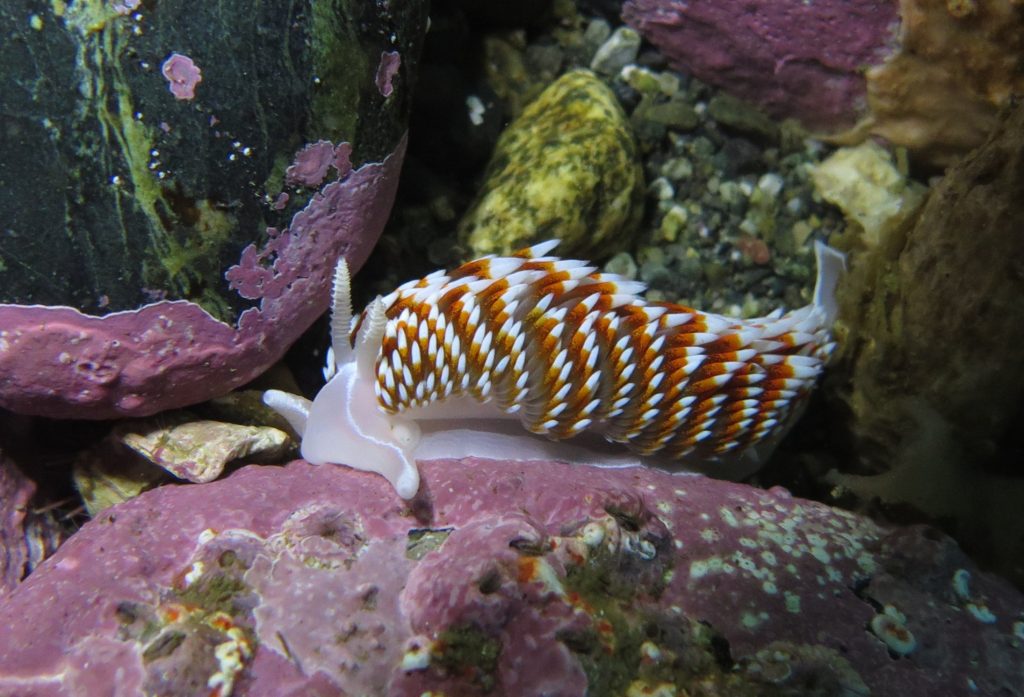
You’ve heard of the giant kelp forests (Macrocystis pyrifera) – they are everything you would imagine. In Southern Chile these trees of the ocean shoot to the surface, with 2m long fronds that sway and tangle around the stipes. This species has colonised a wide range of substrates, from sand and sediment bottom, forming sparse populations on top of limpet (Crepipatella spp.) beds, in sheltered channels to high-energy exposed rocky shores. The kelp forests are critical for the energy and nutrient cycles and provide a rich food source and habitat for the diverse marine life, such as the Panchote crab (Taliepus dentatus) and Horsefish (Congiopodus peruvianus).
Key observations included many echinoderm species, such as Stichaster striatus, Arbacia dufresnii and the Flameback nudibranch (Phidiana lottini). Chilean fish such as “Rollizo” (Pinguipes chilensis) and “Chancharro” (Sebastes capensis) were also occasionally observed.
A huge thank you to Adrian Villarroel, who donated his time to run the Jecentar SPA vessel, and also to I-mar research centre from Universidad de Los Lagos Puerto Montt for the free tanks and air.
